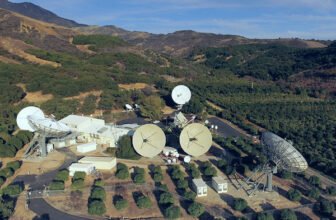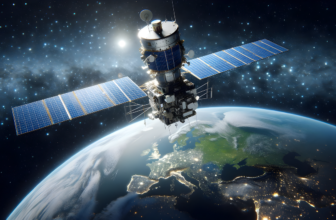
What is the advantages and disadvantages of Satellite Internet?
Satellite internet is a fascinating technology that has made global internet connectivity possible, especially in remote and rural areas where traditional wired networks are not feasible. However, while it has transformed internet access for many, it also comes with its own set of challenges and limitations. This article delves into the biggest issue with satellite internet, its advantages, and its disadvantages.
The Biggest Issue with Satellite Internet
One of the most significant challenges facing satellite internet is latency. Latency refers to the delay in data transmission between the user’s device and the server. In satellite internet, data must travel from the user’s device to a satellite orbiting thousands of miles above the Earth, then to a ground station, and back again. This journey results in a much higher latency compared to traditional broadband connections.
For example, geostationary satellites, which are positioned approximately 22,236 miles above the Earth’s equator, can have a latency of 600 milliseconds or more. This delay may not affect basic web browsing or email usage but can be problematic for activities requiring real-time responsiveness, such as online gaming, video conferencing, and VoIP calls.
Other Challenges of Satellite Internet
While latency is the primary concern, other issues also plague satellite internet:
- Weather Sensitivity: Satellite internet performance can be significantly affected by adverse weather conditions, such as heavy rain, snow, or storms. This phenomenon, known as rain fade, can disrupt the signal and cause interruptions in service.
- Data Caps: Many satellite internet providers impose data caps or fair usage policies, which limit the amount of high-speed data a user can consume within a billing period. Once the cap is reached, users may experience throttled speeds.
- Cost: Satellite internet tends to be more expensive than other types of internet services, both in terms of installation and monthly fees. The high cost can be a barrier for some users.
- Limited Bandwidth: The total available bandwidth on a satellite is shared among all users in the coverage area. This can lead to slower speeds during peak usage times.
- Equipment Requirements: Satellite internet requires specialized equipment, including a satellite dish and modem, which can be bulky and expensive to install and maintain.
Advantages of Satellite Internet
Despite its challenges, satellite internet offers several compelling advantages:
- Global Coverage: Satellite internet can reach virtually any location on Earth, making it ideal for remote areas where traditional broadband services are unavailable. This includes rural communities, ships at sea, and even airplanes.
- Quick Deployment: Setting up satellite internet is relatively fast compared to laying fiber optic cables or other physical infrastructure. This makes it an excellent option for disaster recovery or temporary setups.
- Independence from Terrestrial Infrastructure: Unlike cable or DSL, satellite internet does not rely on physical networks on the ground, which can be damaged by natural disasters or other disruptions.
- Improved Accessibility: Satellite internet has made it possible to connect underserved populations, bridging the digital divide and providing access to essential online services like education and healthcare.
- Scalability: Satellite networks can quickly scale to meet demand without the need for extensive physical infrastructure development.
Disadvantages of Satellite Internet
While satellite internet has its benefits, it also has notable drawbacks:
- High Latency: As mentioned earlier, latency is a significant issue, especially for real-time applications like gaming or video conferencing.
- Weather Dependence: Adverse weather conditions can disrupt service, making it less reliable than terrestrial internet options.
- Limited Speed: While newer satellite systems like SpaceX’s Starlink promise higher speeds, traditional satellite internet often struggles to compete with the speeds offered by fiber or cable connections.
- Expensive Installation and Maintenance: The upfront cost of installing satellite internet equipment and ongoing maintenance can be prohibitive for some users.
- Environmental Concerns: The increasing number of satellites launched into orbit raises concerns about space debris and its potential impact on the environment and other space activities.
The Future of Satellite Internet
Recent advancements in satellite technology aim to address some of these challenges. Low Earth Orbit (LEO) satellite constellations, such as Starlink, OneWeb, and Amazon’s Project Kuiper, promise to reduce latency and increase speeds. These satellites operate at much lower altitudes (between 300 and 1,200 miles) compared to traditional geostationary satellites, significantly reducing the time it takes for data to travel.
Additionally, advancements in antenna technology, better compression algorithms, and improved satellite design are expected to enhance the reliability and performance of satellite internet.
Satellite internet has revolutionized global connectivity, particularly in areas where traditional internet infrastructure is impractical. While it has its challenges, notably latency, weather sensitivity, and cost, ongoing technological innovations are making it a more viable and competitive option. As the demand for internet access continues to grow, satellite internet is poised to play a crucial role in bridging the digital divide and connecting the world. image/esa.int




